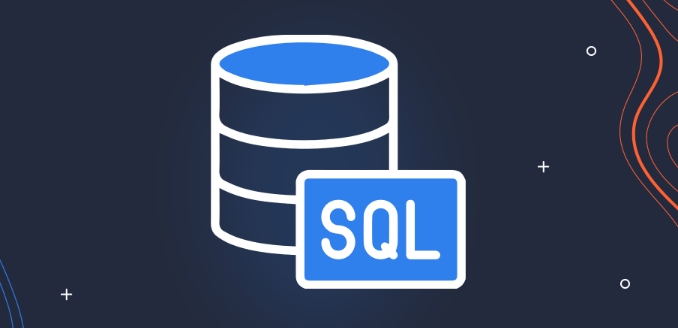Key ways to implement audit functions in SQL databases include: 1. Use the built-in audit functions of the database, such as MySQL's general log or enterprise version plug-in, PostgreSQL's pg_log_statement or pgAudit, and SQL Server Audit for SQL Server; 2. Use triggers to record changes in specific tables, and record operations into the audit log table by creating trigger functions; 3. Record operation context information, such as user ID, IP address, etc. at the application layer to supplement the shortcomings of the database log; 4. Unify the log format and centrally manage it, use tools such as ELK or Splunk for log analysis and storage, and set access controls to prevent logs from being tampered with. When implementing audits, you should also pay attention to performance impact, log archiving strategies and ongoing log review mechanisms to ensure the effectiveness and availability of audits.

The audit function is implemented in SQL databases, mainly to track and record operational behaviors in the database, help troubleshoot problems, meet compliance requirements, or conduct security analysis. The key point is to choose the right audit method and ensure the integrity and availability of log information.

1. Use the built-in audit function of the database
Most modern SQL database systems (such as MySQL, PostgreSQL, SQL Server, Oracle) provide built-in audit mechanisms. For example:
- MySQL : All queries can be recorded by enabling general log or using the enterprise version of the audit plugin.
- PostgreSQL : You can use
pg_log_statementextension or third-party extensions such aspgAuditto enhance audit capabilities. - SQL Server : comes with the "SQL Server Audit" function, which can create server or database-level audit specifications.
Recommendation: When enabling these functions, pay attention to the storage path and retention policy of log files to avoid the disk space being quickly filled.

2. Use triggers to record changes
If the database does not support perfect auditing functions, or only audits specific tables are required, you can manually create triggers for these tables, and automatically record relevant information when data is inserted, updated or deleted.
To give a simple example, in PostgreSQL you can create a trigger function:

CREATE OR REPLACE FUNCTION log_changes()
RETURNS TRIGGER AS $$
BEGIN
INSERT INTO audit_log (table_name, action, old_data, new_data, changed_at)
VALUES (TG_TABLE_NAME, TG_OP, OLD, NEW, NOW());
RETURN NEW;
END;
$$ LANGUAGE plpgsql;Then bind this function to the target table:
CREATE TRIGGER user_change_trigger AFTER INSERT OR UPDATE OR DELETE ON users FOR EACH ROW EXECUTE FUNCTION log_changes();
Notice:
- Triggers can affect performance, especially for frequently updated tables.
- Audit log tables should be archived or cleaned regularly to avoid affecting the main business logic.
3. In combination with the application layer record operation context
Sometimes, database-level auditing alone is not enough to restore the complete operational background. For example, a user performs a delete operation through the front-end interface, but you only see a delete statement in the database, and you don’t know which user initiated it.
The solution is to make records at the application layer, such as:
- Before performing SQL operations, write user ID, IP address, operation type and other information to the log or audit table.
- Use the connection pool middleware to record client information.
- Use the "Operation Log Data Change" dual recording method for sensitive operations.
This way, even if the database log is lost, you can find clues from the application log.
4. Configure log format and centralized management
No matter which way you do auditing, the structured and centralized management of logs are important. suggestion:
- Unified log format, including fields such as timestamp, username, operation type, affected data identification, etc.
- Logs are collected and analyzed using tools such as ELK (Elasticsearch, Logstash, Kibana) or Splunk.
- Set access permission control to prevent audit logs from being tampered with.
Basically that's it. It is not complicated to implement, but what is easy to ignore is the continuous maintenance and review mechanism of logs. Just recording or not analyzing is a waste of time.
The above is the detailed content of Implementing Auditing in SQL Databases. For more information, please follow other related articles on the PHP Chinese website!

Hot AI Tools

Undress AI Tool
Undress images for free

Undresser.AI Undress
AI-powered app for creating realistic nude photos

AI Clothes Remover
Online AI tool for removing clothes from photos.

Clothoff.io
AI clothes remover

Video Face Swap
Swap faces in any video effortlessly with our completely free AI face swap tool!

Hot Article

Hot Tools

Notepad++7.3.1
Easy-to-use and free code editor

SublimeText3 Chinese version
Chinese version, very easy to use

Zend Studio 13.0.1
Powerful PHP integrated development environment

Dreamweaver CS6
Visual web development tools

SublimeText3 Mac version
God-level code editing software (SublimeText3)
 Defining Database Schemas with SQL CREATE TABLE Statements
Jul 05, 2025 am 01:55 AM
Defining Database Schemas with SQL CREATE TABLE Statements
Jul 05, 2025 am 01:55 AM
In database design, use the CREATETABLE statement to define table structures and constraints to ensure data integrity. 1. Each table needs to specify the field, data type and primary key, such as user_idINTPRIMARYKEY; 2. Add NOTNULL, UNIQUE, DEFAULT and other constraints to improve data consistency, such as emailVARCHAR(255)NOTNULLUNIQUE; 3. Use FOREIGNKEY to establish the relationship between tables, such as orders table references the primary key of the users table through user_id.
 Key Differences Between SQL Functions and Stored Procedures.
Jul 05, 2025 am 01:38 AM
Key Differences Between SQL Functions and Stored Procedures.
Jul 05, 2025 am 01:38 AM
SQLfunctionsandstoredproceduresdifferinpurpose,returnbehavior,callingcontext,andsecurity.1.Functionsreturnasinglevalueortableandareusedforcomputationswithinqueries,whileproceduresperformcomplexoperationsanddatamodifications.2.Functionsmustreturnavalu
 Using SQL LAG and LEAD functions for time-series analysis.
Jul 05, 2025 am 01:34 AM
Using SQL LAG and LEAD functions for time-series analysis.
Jul 05, 2025 am 01:34 AM
LAG and LEAD in SQL are window functions used to compare the current row with the previous row data. 1. LAG (column, offset, default) is used to obtain the data of the offset line before the current line. The default value is 1. If there is no previous line, the default is returned; 2. LEAD (column, offset, default) is used to obtain the subsequent line. They are often used in time series analysis, such as calculating sales changes, user behavior intervals, etc. For example, obtain the sales of the previous day through LAG (sales, 1, 0) and calculate the difference and growth rate; obtain the next visit time through LEAD (visit_date) and calculate the number of days between them in combination with DATEDIFF;
 How to find columns with a specific name in a SQL database?
Jul 07, 2025 am 02:08 AM
How to find columns with a specific name in a SQL database?
Jul 07, 2025 am 02:08 AM
To find columns with specific names in SQL databases, it can be achieved through system information schema or the database comes with its own metadata table. 1. Use INFORMATION_SCHEMA.COLUMNS query is suitable for most SQL databases, such as MySQL, PostgreSQL and SQLServer, and matches through SELECTTABLE_NAME, COLUMN_NAME and combined with WHERECOLUMN_NAMELIKE or =; 2. Specific databases can query system tables or views, such as SQLServer uses sys.columns to combine sys.tables for JOIN query, PostgreSQL can be used through inf
 How to create a user and grant permissions in SQL
Jul 05, 2025 am 01:51 AM
How to create a user and grant permissions in SQL
Jul 05, 2025 am 01:51 AM
Create a user using the CREATEUSER command, for example, MySQL: CREATEUSER'new_user'@'host'IDENTIFIEDBY'password'; PostgreSQL: CREATEUSERnew_userWITHPASSWORD'password'; 2. Grant permission to use the GRANT command, such as GRANTSELECTONdatabase_name.TO'new_user'@'host'; 3. Revoke permission to use the REVOKE command, such as REVOKEDELETEONdatabase_name.FROM'new_user
 What is the SQL LIKE Operator and How Do I Use It Effectively?
Jul 05, 2025 am 01:18 AM
What is the SQL LIKE Operator and How Do I Use It Effectively?
Jul 05, 2025 am 01:18 AM
TheSQLLIKEoperatorisusedforpatternmatchinginSQLqueries,allowingsearchesforspecifiedpatternsincolumns.Ituseswildcardslike'%'forzeroormorecharactersand'_'forasinglecharacter.Here'showtouseiteffectively:1)UseLIKEwithwildcardstofindpatterns,e.g.,'J%'forn
 How to backup and restore a SQL database
Jul 06, 2025 am 01:04 AM
How to backup and restore a SQL database
Jul 06, 2025 am 01:04 AM
Backing up and restoring SQL databases is a key operation to prevent data loss and system failure. 1. Use SSMS to visually back up the database, select complete and differential backup types and set a secure path; 2. Use T-SQL commands to achieve flexible backups, supporting automation and remote execution; 3. Recovering the database can be completed through SSMS or RESTOREDATABASE commands, and use WITHREPLACE and SINGLE_USER modes if necessary; 4. Pay attention to permission configuration, path access, avoid overwriting the production environment and verifying backup integrity. Mastering these methods can effectively ensure data security and business continuity.
 Explain the Distinction Between a SQL Schema and a Database.
Jul 05, 2025 am 01:31 AM
Explain the Distinction Between a SQL Schema and a Database.
Jul 05, 2025 am 01:31 AM
OK, please provide the article content that needs a summary.







